Solar Neighborhood Observing Program Coordinator:Jack Fitzmier |
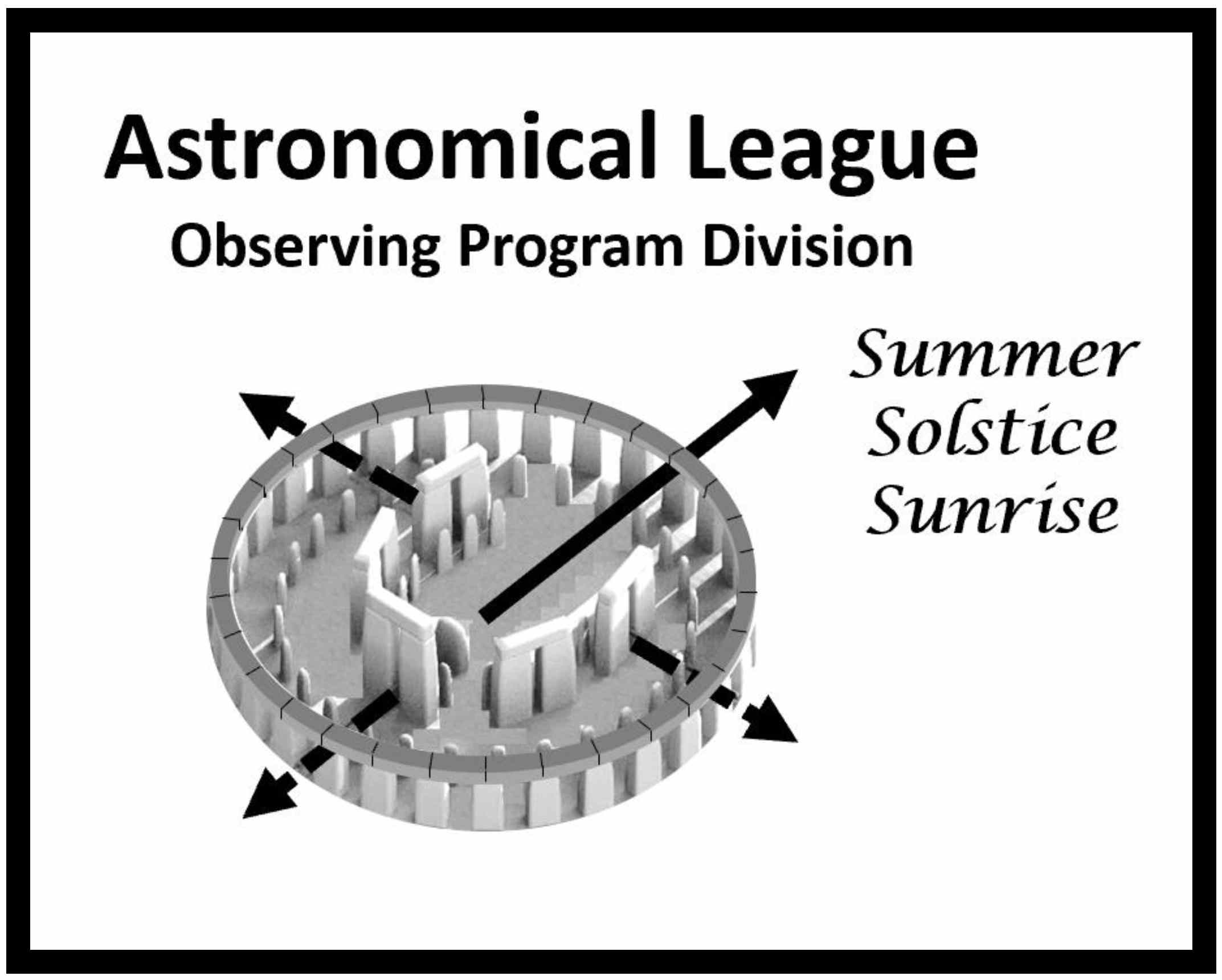 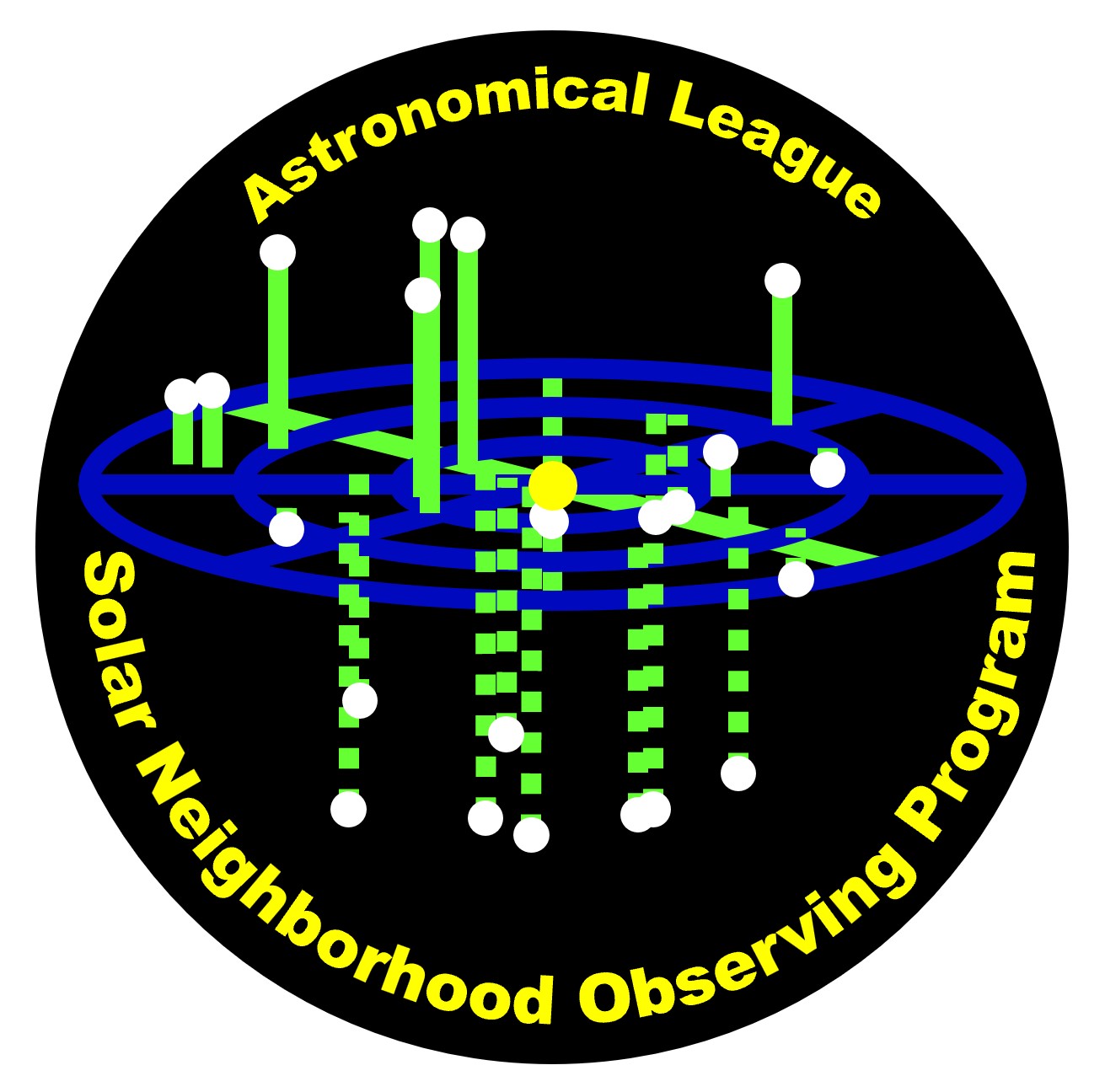 |
Introduction
Welcome to the Astronomical League’s Solar Neighborhood Observing Program! In this Program, you will discover what really is a typical star, and it turns out that our sun is not one. Other star types are much more numerous. You will also discover that the most common nearby stars are quite faint and some are not even visible to the naked eye. If you have two stars with the same absolute magnitude, it is true that the closer one will be brighter, but being near does not always equate to being bright. In this Observing Program, you will observe some of these fainter red and white dwarf stars.
| Within 10 parsecs or 33 light-years of our sun, lie over 200 other stars brighter than 17th magnitude. Many, such as Sirius or Vega, are well-known naked eye stars. These are bright main-sequence stars and are often considered normal or typical stars. However, the vast majority of stars are not intrinsically bright. A survey of the 249 objects that occupy this sphere of space 10 parsecs in radius reveals several striking observations. First, there are no extraordinarily bright stars: no giants or supergiants like Antares or Betelgeuse. There are no hot, type O or B stars like Rigel. In fact, the majority are low-mass type M stars – red dwarfs. One can find only a handful of stars of spectral types intrinsically brighter than the sun, spectral types A (four) and F (eight) in our neighborhood. Only 14 of the nearest 162 stars, or 8.6%, are larger and have an absolute brightness greater than the sun.
Yet some of these nearby stars are very interesting characters. Barnard’s Star, a 9th magnitude red dwarf, has the highest known proper motion of any star, over 10 arc seconds per year. At that rate, a careful observer can detect movement in only a few months. Other stars show similar properties to our sun, and many are known to harbor planets. |
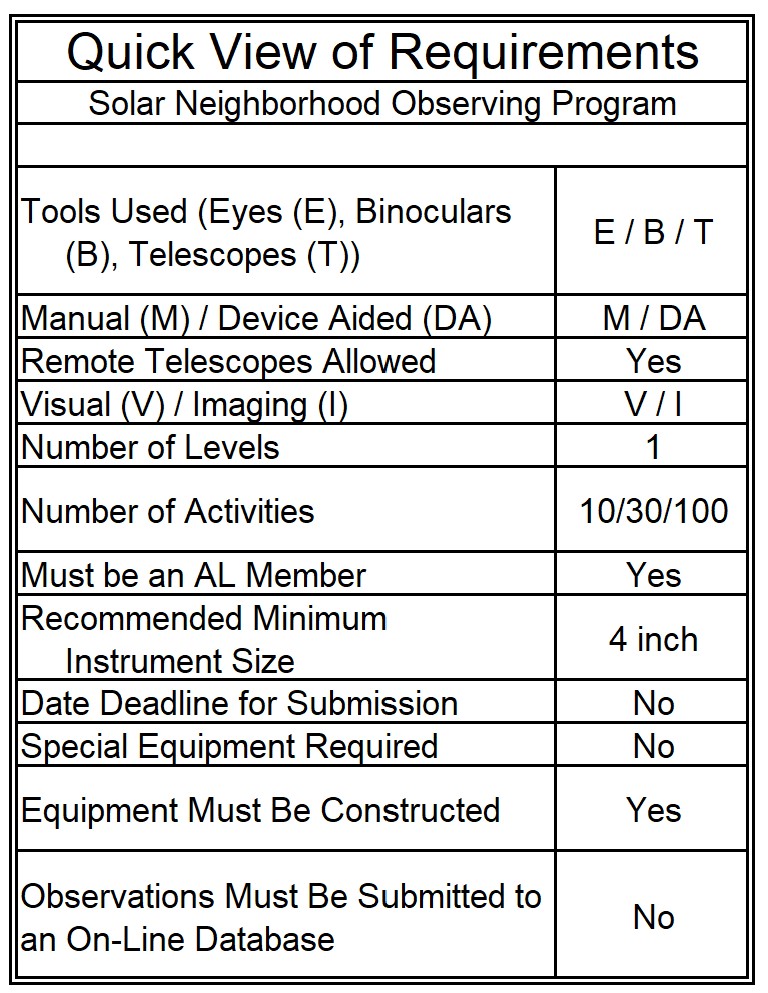 |
Definition of Binoculars Allowed for Binocular Observations and Certifications
The Astronomical League defines a binocular telescope as an observing device with two optical tubes and two eyepieces, where the eyepieces can be replaced with eyepieces of different focal lengths. “Bino-Viewers” have a single optical tube, but two eyepieces. “Bino-Viewers” and Binocular Telescopes may be used in any Observing Programs that are telescope-based. They may not be used in binocular programs.
Observing devices with two optical tubes and two eyepieces, where you cannot change the eyepieces, are binoculars. Binoculars may be used in any Observing Program requiring telescopes or binoculars. Most binoculars do not have sufficient magnification to replace telescopes.
Requirements and RulesThis certification is available to members of the Astronomical League, either through their local astronomical society or as members at large. If you are not a member and would like to become one, check with your local astronomical society, search for a local society on the Astronomical League Website (click here), or join as a Member-at-Large (click here). There are multiple options for completing this Observing Program.
|
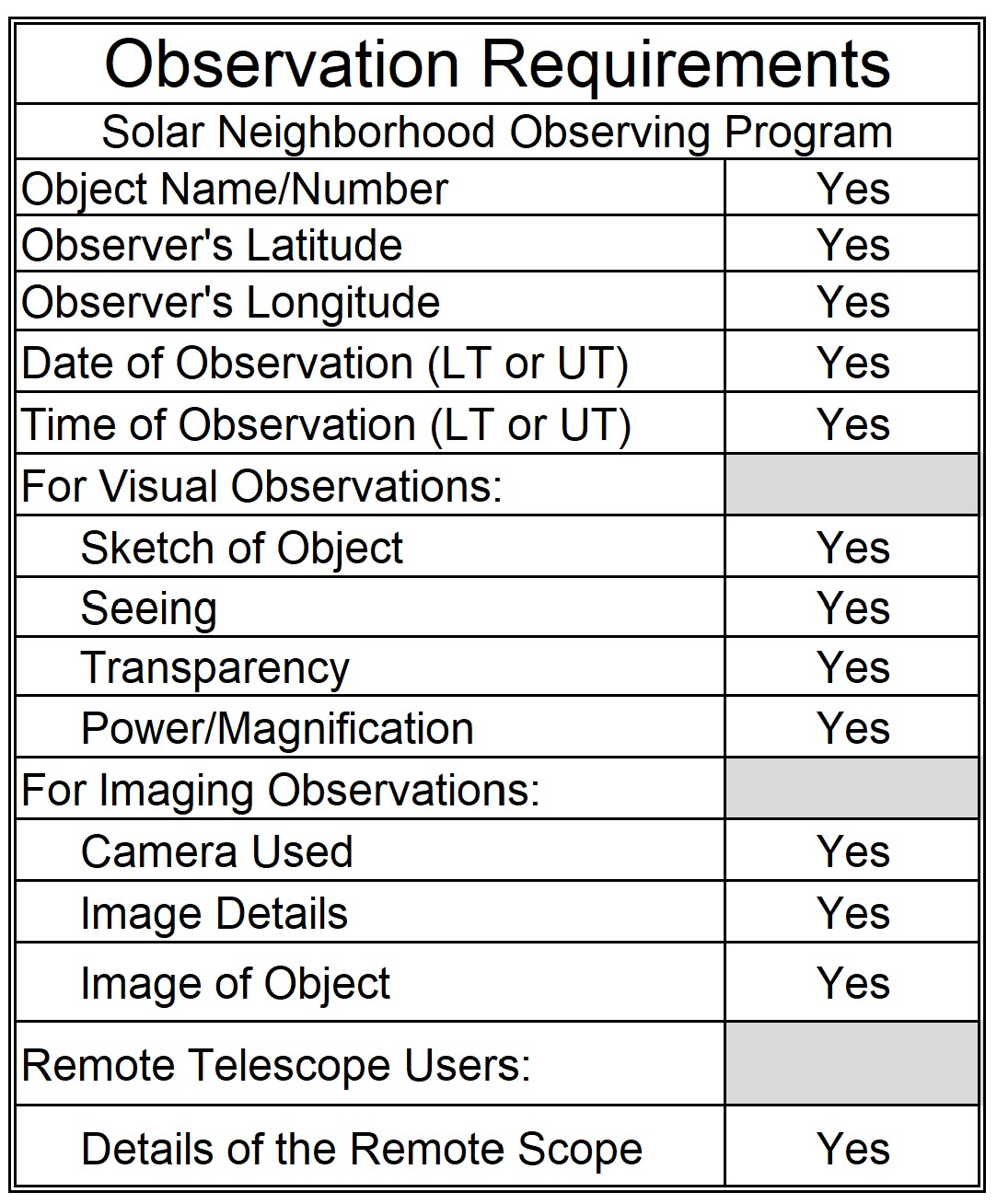 |
To obtain the Naked-Eye certification, you must observe any 10 stars on the list. Your certificate will be sent to you through email and may be printed. 19 stars are brighter than magnitude 4. The sketches for any naked-eye observations must show roughly where in the particular constellation the observed star resides.
To obtain the binocular certification, you must observe any 30 stars on the list. The observations may be done with binoculars or naked-eye and may include those used for the Naked-Eye certification. Your certificate will be sent to you through email and may be printed. 74 stars are brighter than magnitude 8. The sketches for binocular observations must show stars in the field of view as available, but 6 should be your goal, if possible.
To obtain your certificate and pin for the Telescopic level of this Observing Program (visually or through imaging), you are required to observe or image 100 of the stars on the list. You must also complete three additional tasks for either telescopic certification; task details are below. For the visual telescopic certification, the 100 star observations may be done naked-eye (up to 10), binoculars (up to 20 more), or telescope (70 to 100 visual and imaging), and may include those used for the Naked-Eye and Binocular certifications. For the imaging telescopic certification, all 100 images must be done through imaging. 178 of the targets are north of -30° declination, and 202 are brighter than magnitude 12, but you may choose any star in the list. For visual observations, simple drawings of the field around each star are required – artistry is not. At least 6 other stars must be shown in each drawing or image (if possible).
To put the target requirements succinctly:
- Unaided Eye – 10 (or more) different objects.
- Binocular – 30 total (or more) different objects. May include up to 10 Unaided Eye.
- Telescope – 100 total (or more) different objects. May include up to 10 unaided eye observations and 20 binocular observations.
- Imaging – 100 total (or more) different objects, all done through imaging.
- If imaging is mixed with visual, the certification is telescope, not imaging.
Note: Not all stars on the list will be visible from your latitude.
No complex or expensive equipment is required to complete this Observing Program. All of these stars are visible through a telescope with 4 inches of aperture, and many can be found from considerably light-polluted locations.
(This section was updated on 2/10/2024 to clarify imaging requirements for these tasks.)
The observer completing the telescopic (visual or imaging) certification is also required to perform three additional tasks. These observations will be easiest at higher magnifications.
1) Observe or image Barnard’s Star at least 3 times over a minimum of a 12-month period and plot its position against other field stars for each observation. At least a magnification of 200x is recommended in order to make the small positional change of Barnard’s Star more apparent. A chart of the star field is provided in Appendix A.
2 – Visual) Make an occulting eyepiece using a bar, disk, or half circle and observe the white dwarf companion of either Sirius or Procyon. Make a drawing and try to estimate the separation and position angle to 45 degrees (e.g. north, northeast, east, etc.). At least a magnification of 200x is recommended in order to make the small separation of the much fainter secondary star from the primary one easier to see (2 – 10 seconds for Sirius and 5 seconds for Procyon). A procedure for modifying an eyepiece to make it an occulting eyepiece is provided in Appendix B.
2 – Imaging) Image the dwarf companion of Sirius or Procyon. Successful techniques have been (1) taking a planetary approach with a focal ratio as high as 6X pixel size with the “lucky imaging” technique recommended (see links in appendix) or (2) using a masked or occulted clear or light-colored filter on the camera at relatively long focal ratio (f/8-f/10). Any other imaging technique will also be allowed.
3 – Visual) Observe the sun using a pinhole projection or a sun funnel. Sketch or image the projection. Include any detail you see.
3 – Imaging) Take a full disk solar image and label all sunspots.
Do NOT look directly at the Sun. This is very dangerous and can cause immediate and permanent blindness. Use proper solar filters or indirect viewing.
To complete the program, the participant must simply observe and log the required number of the nearest stars featured on the observing list and perform the three additional tasks. Submit your observation logs with sketches or images to the Solar Neighborhood Observing Program Coordinator. Please note that all observations must include the following basic information:
- Observer’s name
- Object’s name
- Date and Time (Local or Universal Time)
- Observing Site (Latitude and Longitude)
- Sky conditions (Seeing and Transparency, optional for remote imaging)
- Instrument used and magnification (visual) or FOV (imaging)
- Target ID#, Name, and Stellar Classification
- Sketch or image of the object (should include at least 6 field stars, if possible)
- Identify North (N) and East (E) on your sketches or images
- Your perception of any star color
- Information about star colors and stellar classifications can be found here.
Observation Logs: An observation log template containing these fields is available in Appendix C of this Observing Program. Any other log form of your choosing may also be used, as long as it contains the required information. The Astronomical League store sells an observation journal.
Go-To Scope: While “go-to” telescope systems are allowed for submissions, traditional star-hopping methods are encouraged for the completion of this list, as they require the observer to truly learn the sections of the sky they are exploring; an effort that gives a greater sense of personal achievement once the star is successfully located.
Sketching / Imaging: Sketching is required due to the difficulty in determining some of the stars. Primarily the nearby stars and key stars that identify the field are all that need to be sketched. If you prefer to image the stars, please indicate the target star with a circle or a pointer. Often these stars have moved significantly since the commonly used SDSS reference images were released.
Submitting for Certification
| If you note any issues with the description or target lists for this Observing Program, please be sure to pass them on to the Coordinator.
To submit your observations, send COPIES of your logs to the Solar Neighborhood Observing Program Coordinator (or a link to their location online), along with your name, mailing address, astronomy club or Astronomical League affiliation, email address, phone number, and the person to whom the certification should be sent. Please do not send your original logs, as they will not be returned. Upon the reception and verification of the observations by the Coordinator, a certificate and award pin (if earned) will be sent to the address provided, or to the Awards Coordinator of your club for presentation (if requested). Good luck and enjoy these stellar jewels. Please send your submission to the: |
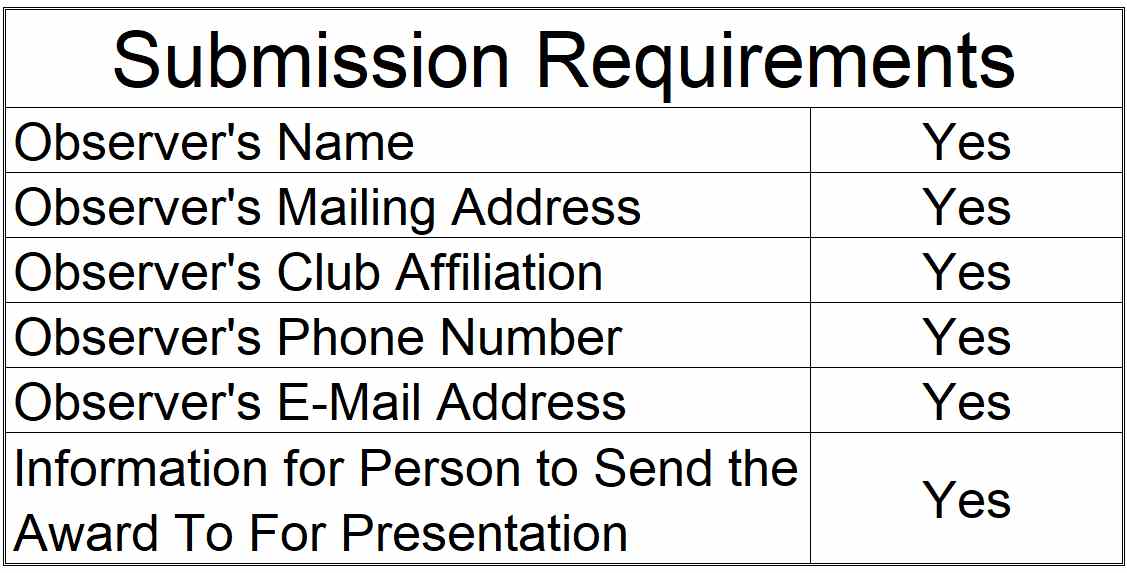 |
Solar Neighborhood Observing Program Coordinator:Jack Fitzmier |
Notes:
Acknowledgement:
The idea for this Observing Program was proposed to the Astronomical League by David Wickholm in October of 2021. Thanks, David, for a great idea for another Observing Program.
Links:
- List of stars within 10 parsecs
- Imaging Sirius B



